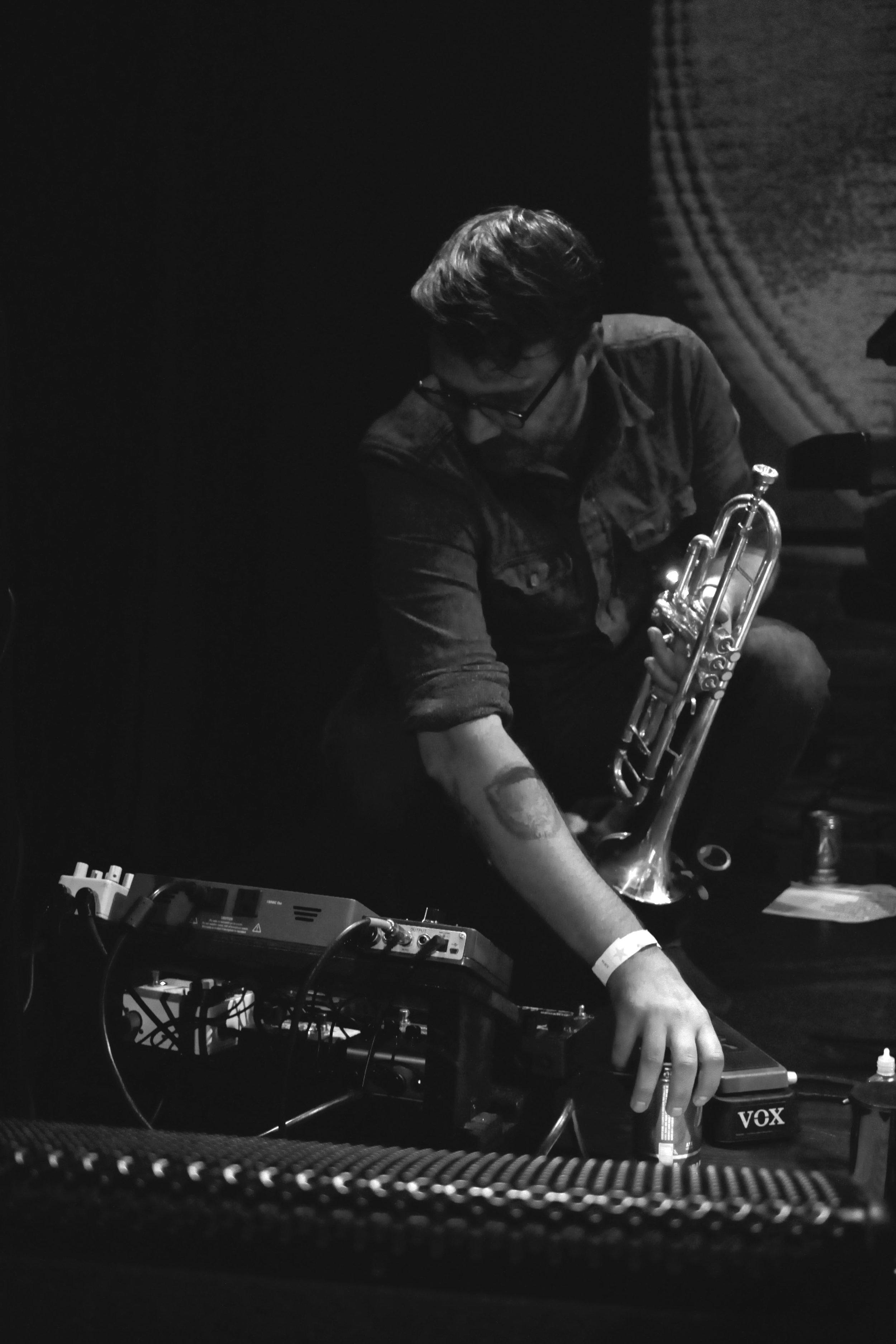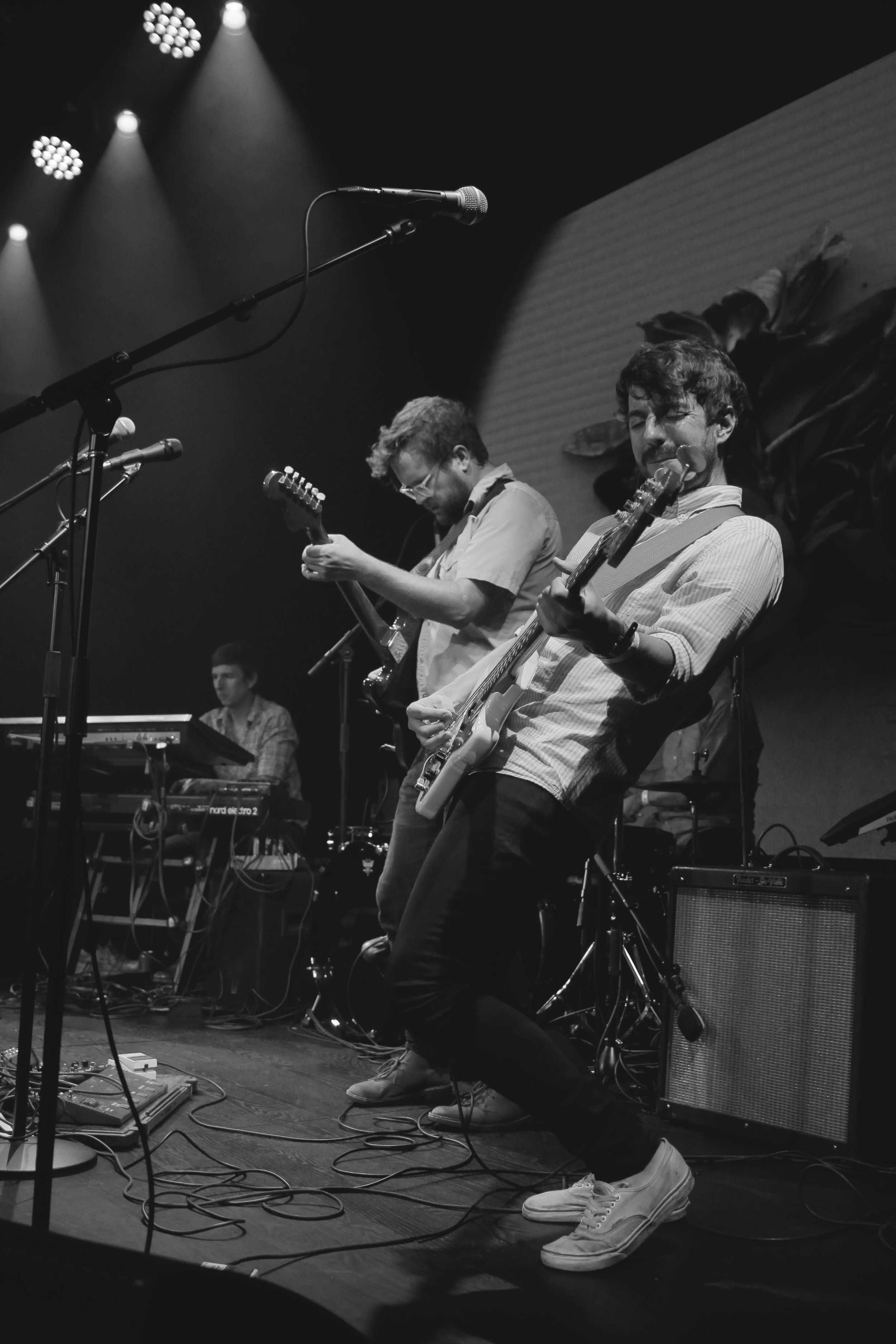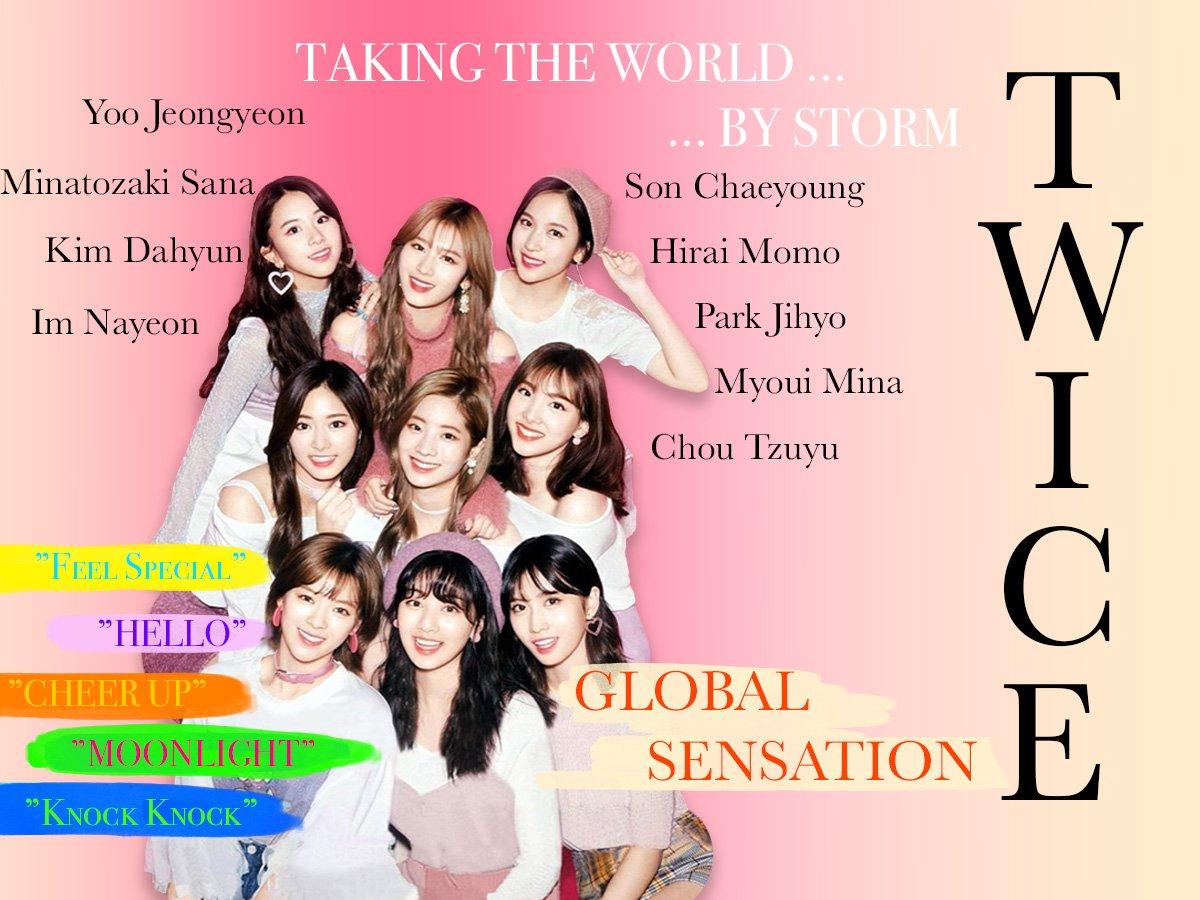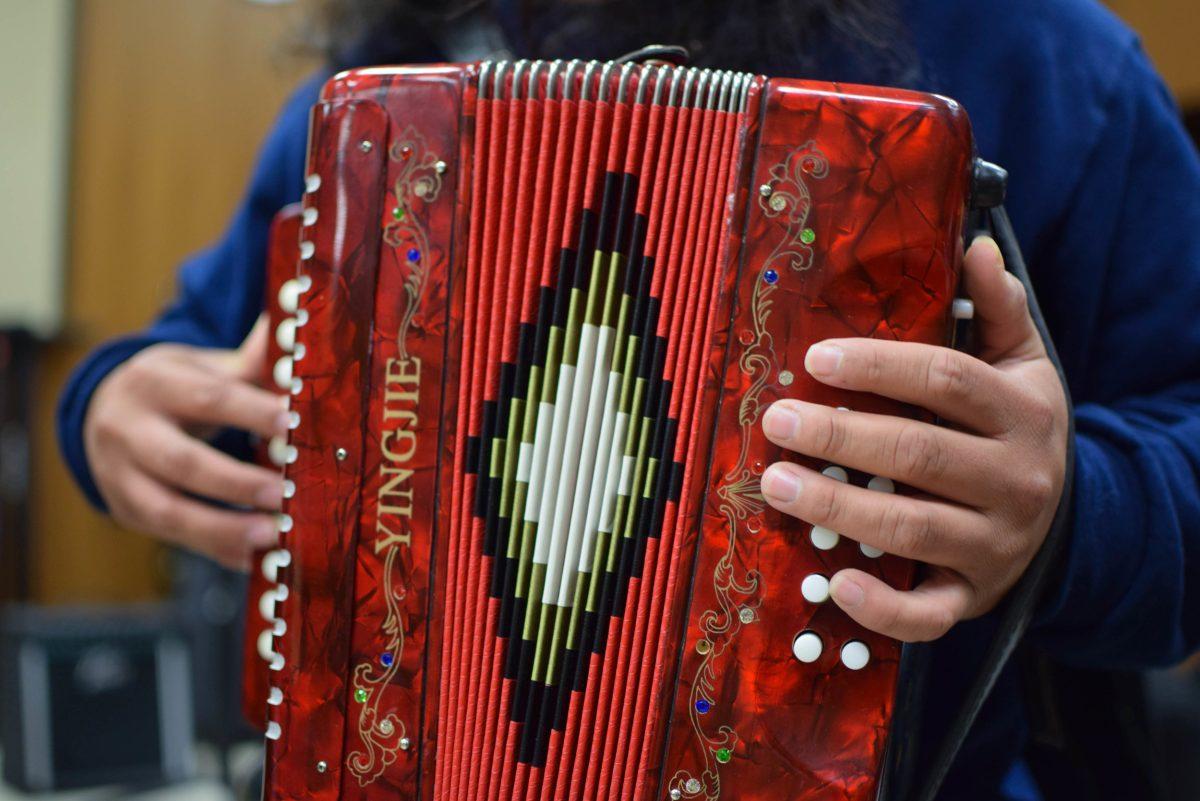“It was just me in the beginning,” lead singer Matt Hines says, reminiscing about dorm room jam sessions and improvised venues. The Eastern Sea has experienced a transformative journey in terms of members, but lead singer Matt Hines remains at the forefront.
Story by Henry Youtt
Photos by Laura Godinez
The Eastern Sea is a proud Red-River band, frequenting the street’s live venues as they fuse Latin rhythms and funk-pop to score primetime shows and festival spots. But before any of this, there was just one guy– a soon-to-be St. Edward’s University valedictorian– drawing up tunes in the solitude of his bedroom.
Lead singer Matthew Hines closes his eyes as he performs one of the last songs of the night.
“I was playing songs just by myself for a while in my dorm room, just making records on my computer and stuff like that,” Hines says. “[In] those early days, we made a record at a friend’s place—just kind of D.I.Y.—putting things together as we figured them out. Eventually, I brought in some friends who I created more of a real band with. And that was The Eastern Sea.”
Trumpet player Kevin Thomas adjusts his sound.
Congregating on beat-up couches and patchwork chairs, Hines’ friends-turned -bandmates included bass player and University of Texas at Austin alum Tomas Garcia-Olano, as well as instrumentalists on drums, guitar and keyboard. Together, the band gravitated toward modern sounds. “I am a really huge fan of contemporary music,” Hines says. “I like things that are coming out now. I like pop music. So I am always somehow chasing some kind of fresh sound. I am not exactly one of those artists to stick to the things I know.”
The Austin-based group still operates as it did in the early days. Hines writes the songs and the band organizes the arrangements. With their 2015 record, “The Witness,” The Eastern Sea added new members and a new sound, ushering in untapped creative insight and a confidence for making it big. “‘The Witness’ is a shift,” Hines says. “There’s an energy that I think is definitely different. We wanted to make music that was appropriate for the stages we want to play on, and we wanted to play on bigger stages in front of bigger audiences, trying to make big, energetic and compelling music.”
“The Witness” delivers a compelling sound both buoyant and charming, animated with spirited beats and vibrant harmonies. Brass instrumentalist Kevin Thomas plays trumpet, a role central to the life of the album. The rich, smooth and sweet trumpet tones compliment Hines’ bright vocals. “It’s very much a duet,” Hines says. “As I started to write more energetic vocal lines, it was more natural that we brought out the trumpet in a more explosive more soloistic way. And that’s why we use the trumpet— it pops. I grew up playing the trombone and tuba and low brass, but that’s not as exciting.”
Matthew Hines and bass player Thomas Garcia-Olano performing.
The band hasn’t always had such excitement and confidence. Hines openly struggles with depression, revealing latent tenderness on the band’s sophomore LP “Plague,” written in the wake of his college graduation. The weight of a major lifestyle change coupled with separation from his girlfriend led to a brooding and downcast sentiment, which he seems to relinquish on this most recent record. “I was really sad then,” Hines says. “It was just tough, and the lyrics came out more somber and introspective. What I wrote for ‘The Witness’ is more fantastical and almost fairytale rather than the gritty reality of ‘Plague.’ ‘The Witness’ is more fun and more fiction.”
On standout track “A Boy In Blue,” Hines reflects on his grandmother’s sudden death and events thereafter. To this point, Hines remarks that part of his music is therapeutic, helping him process parts of life that “don’t really seem fair,” like a relationship frozen in time by death. “A lot of why I write music is to preserve memory,” Hines says. “A lot of the songs are about me wrestling with my memories, and part of the way I cope with them is [to] fantasize about them being good memories. I fantasize a lot in my music about things I wish I could control, because I feel like don’t actually have a lot of control.”
As he writes lyrics, however, Hines seems to become the broken storyteller, the whimsical narrator and the inspired interpreter on a journey of self-discovery. “It’s been a journey,” Hines says. From the bed of his college dorm room, Hines has encountered his fair share of the hardships that come with being an artist. Yet, he sees them not as obstacles, but as catalysts. “If you are a creative person, embrace the difficulties of creativity,” Hines says. “Don’t think the things in the way of your creativity are restricting you. Harnessing creativity past difficulty makes it worth something in the end.”













































